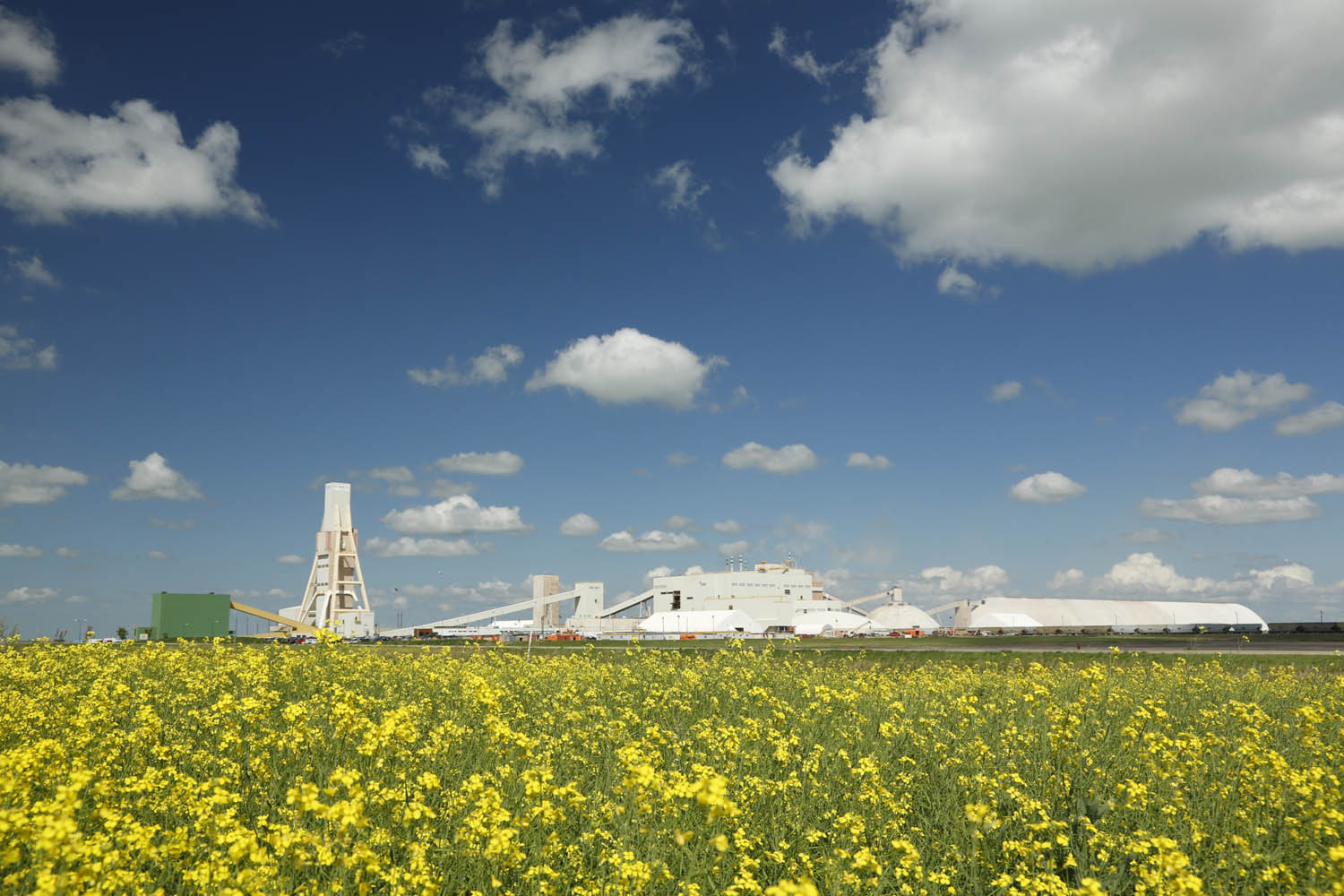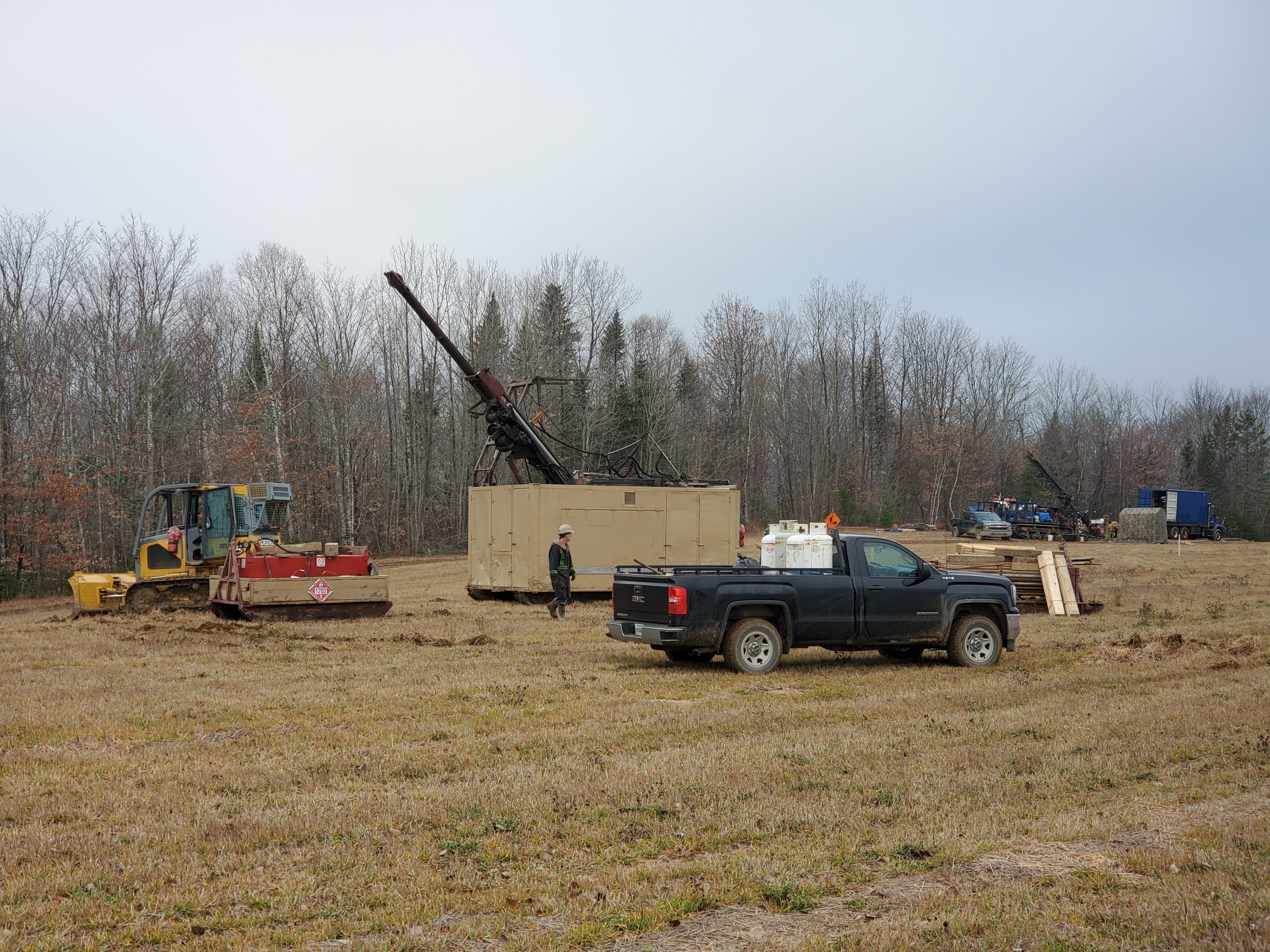New mines, new beginnings

Victoria Gold’s Eagle gold mine in the Yukon,
in June. CREDIT: VICTORIA GOLD
There are a raft of advanced projects with feasibility level studies that have been looking for financing in the past several years. But not many have actually found the capital to proceed with construction, and as a result, when CMJ went looking for new mines to report on this year, we found a very short list.
Last year we noted that junior miners had to get creative with financing in order to move their projects ahead. This year, that remains the case, with majors also being cautious where they invest their money – and construction of many projects being postponed until market conditions improve.
Eagle
When it has its first gold pour in September, Victoria Gold’s Eagle mine will be a shot in the arm for the Yukon – especially considering the Minto mine has been on care and maintenance since last fall. The company is hiring 260 people by the end of the year to staff the operation and is targeting Yukon residents to make up at least 50% of its workforce.
Construction of the open-pit, heap-leach operation began in August 2017 and Victoria announced a $505-million financing supported by Orion Mine Finance, Osisko Gold Royalties and Caterpillar Financial Services last March. Construction was 95% complete in early June.
“Construction of the Eagle gold mine is nearing completion ahead of schedule and the operations team is ready to take advantage by advancing additional ore delivery to the heap leach pad in 2019,” John McConnell, Victoria Gold’s president and CEO said in a release. “With gold approaching an all-time high in Canadian dollar terms, 70% of our costs in Canadian dollars, and first gold production in September, Victoria is perfectly timed to become Canada’s next gold producer.” The company was ahead of schedule on several fronts in June, including commissioning of the primary crusher and overland conveyor which will transport ore to the heap-leach facility. The secondary/tertiary crushing facility was expected to be commissioned in late June. Commissioning at the gold recovery plant was 75% complete. First ore to the leach pad was expected in July.
In June 2019, Orion increased its stake in Victoria to 37.1% when it purchased all of Osisko’s 154.5 million common shares. The company does not expect any changes to the board of directors as a result of the transaction.
Located 85 km from the town of Mayo, Eagle has excellent access to infrastructure, including year-round road access. The site has also been connected to grid power.
TheUS$370-million mine is expected to produce 190,000 oz. gold per year at cash costs of US$550 per oz. or AISC (including royalties) of US$750 per oz. The33,700-tonne-per-day operation has a projected mine life of 10 years and a strip ratio of 0.95 to 1.
At a gold price of US$1,250 per oz., a 2016 feasibility study pegged Eagle’s post-tax net present value (NPV) at $508 million and its internal rate of return (IRR) at 29%.
Eagle hosts reserves of 2.66 million oz.
gold in 123 million tonnes grading 0.67 g/t gold in the Eagle and Olive deposits.

Agnico Eagle’s Meliadine mine in Nunavut celebrated
its first gold pour in February. CREDIT: AGNICO EAGLE
Meliadine
Agnico Eagle Mines’ Meliadine mine in Nunavut had its first gold pour in February 2019, and achieved commercial production in May. Agnico acquired the project, located in the Kivalliq region of Nunavut, in 2010 and approved construction in 2017. The gold miner also operates the Meadowbank mine, 290 km to the northwest.
Meliadine, which contains proven and probable reserves of 3.8 million oz. gold in 16.7 million tonnes grading 6.97 g/t gold, is forecast to produce 230,000 oz.
this year and 385,000 oz. in 2020. Th underground and open pit operation has a mine life of 14 years.
The project is Agnico’s largest in terms of resources. In addition to reserves, it hosts 26 million measured and indicated tonnes grading 3.81 g/t gold for 3.2 million oz. and 13.5 million inferred tonnes grading 6 g/t gold for 2.6 million oz.
Until 2023, mining at Meliadine will be underground only, with access by decline. Each stope, mined by long-hole methods, is backfilled with cemented paste fill (primary stopes) or dry rockfil (secondary stopes). The operation filter tailings to produce dry-stack tailings.
Lamaque
Eldorado Gold’s Lamaque mine in Val-d’Or, Que., achieved commercial production at the end of March, after celebrating its first gold pour last December. Over a seven year mine life, the underground mine is forecast to produce an average of 117,000 oz. gold per year at cash costs of US$516 per oz.
and AISC of US$717 per oz. Ore from the Triangle zone at Lamaque is being processed at the existing (refurbished) Sigma mill, which contributed to the mine’s low capex of under $200 million.
Eldorado Gold acquired Lamaque in 2017 through a takeover of Integra Gold.
A prefeasibility study released in March 2018 projected that Lamaque has an after-tax IRR of 34.3% and an NPV of US$205 million at a 5% discount rate and using a gold price of US$1,300 per oz.
Eldorado is planning 37,000 metres of exploration drilling this year to expand resources in the lower part of the Triangle deposit.
Borden
Commercial production is also expected this year at Borden, Newmont Goldcorp’s electric mine in northern Ontario, in the second half of 2019. See our coverage of Borden in February 2019 and October 2018.
Under construction
Projects currently under construction in Canada include Glencore’s Onaping Depth, Vale’s Copper Cliff Deep and Agnico Eagle’s Whale Tail deposit.
In early 2018, Glencore approved the $700-million Onaping Depth project. Part of Glencore’s Sudbury Integrated Nickel Operations (INO), Onaping Depth is located at 2.6 km depth, below the Craig mine. The mine is expected to begin production in 2023/24.

Glencore’s Craig mine, near Sudbury. The company is developing the Onaping Depth project, about 2.6 km below surface. CREDIT: GLENCORE
Given the heat, distance and ventilation challenges of Onaping Depth’s location, the project took many years of planning. Recent advances in battery electric technology have ultimately made the project economic. Glencore projects that the use of EVs will reduce energy usage for ventilation by 44% and for cooling equipment by 30%.
Lateral development at the project has been carried out by DMC Mining, while Cementation was awarded the contract to develop the 7.2-metre-diameter production shaft.
The internal shaft will be located about 1 km horizontally from the existing Craig shaft, and will involve setting up an underground headframe. The shaft will start at the 1,200-metre level and extend to the 2,630-metre level.
Onaping Depth contains mineable indicated resources of 13.8 million tonnes grading 2.25% nickel and 1.02% copper.
Also in Sudbury, Vale announced it would go ahead with a $760-million investment in its Copper Cliff Deep project last year. It, too, will develop the deep mine as an all-electric operation.
The work includes the complete refurbishment of the Copper Cliff Complex South Shaft, which was shut down in 2008.
The deposits Vale is targeting are close to the South Shaft. The shaft rehabilitation and ventilation work should be completed in the second half of 2019 with full production starting in 2020-21.
In Nunavut, Agnico Eagle is nearing commercial production at the Whale Tail deposit, part of its Amaruq property.
Located 50 km northwest of Agnico’s Meadowbank gold mine, Whale Tail is being developed as a satellite deposit to Meadowbank. Final permits were received in July 2018 and development began immediately. The open pit project is slated for commercial production in the third quarter.
Whale Tail has a 7-year mine life and holds 2.9 million oz. in proven and probable reserves in 24.9 million tonnes grading 3.59 g/t gold.
After a financial setback early this year, it looks like Nemaska Lithium may soon be back on track at its Whabouchi lithium mine and electrochemical plant in Quebec.
Last spring, Nemaska announced a $1.1-billion financing to build the $800-million mine, located in the James Bay region, and the plant, in Shawinigan.
The company had expected to begin production of spodumene concentrate in the third quarter of 2019 with the Shawinigan plant producing lithium hydroxide and lithium carbonate a year later.
However, in February, the company announced in needed another $375 million to complete construction.
The funds are required to meet the drawdown conditions outlined in the company’s streaming agreement with Orion Mine Finance and its senior secured bonds.
In July, Nemaska announced a proposed $600-million investment in the project by London-based Pallinghurst Group that would allow it to finish construction.
Pallinghurst would invest up to $200 million in a private placement at 25¢ per share, and would guarantee up to $400 million by way of a standby agreement on a rights offering at the same price. The initial $200-million investment would give Pallinghurst a 46% stake in the company.
Shareholders will get to vote on the proposal in or before October.
Proven and probable reserves at Whabouchi (open pit and underground) total 37 million tonnes grading 1.4% Li2O. The project has a mine life of 33 years.

Western Potash’s Milestone potash project in Saskatchewan in May. CREDIT: WESTERN POTASH
At Western Potash’s Milestone potash project, pilot-scale production (less than 150,000 tonnes per year) is expected to begin in 2020. The company began production drilling at the project, 35 km southeast of Regina, Sask., in July.
Milestone will employ horizontal drilling and selective dissolution techniques, a new method for Canada and, Western Potash says, a lower impact method than solution mining.
The first phase of the project has a 12-year mine life. The construction contract for above ground facilities, installation of equipment and other work was awarded in June to contractor Stuart Olson.
Waiting in the wings
Miners are choosing when and where to invest their capital very carefully. Agnico Eagle’s Akasaba West open-pit project, a satellite deposit of its Goldex mine in Quebec, and Iamgold’s Côté gold project in Ontario are both on hold for now.
Centerra Gold has received permits it needs to being construction at its Kemess Underground project in B.C., but hasn’t yet made the decision to proceed.
Others, such as Newmont Goldcorp’s Coffee project in the Yukon, are in permitting.
As for juniors, Pure Gold has not yet made a production decision at its past-producing Madsen project in Red Lake, Ont., but a recent $47.5-million financing will allow it to continue exploration and development work.
Look for news on these projects in future issues.





Comments